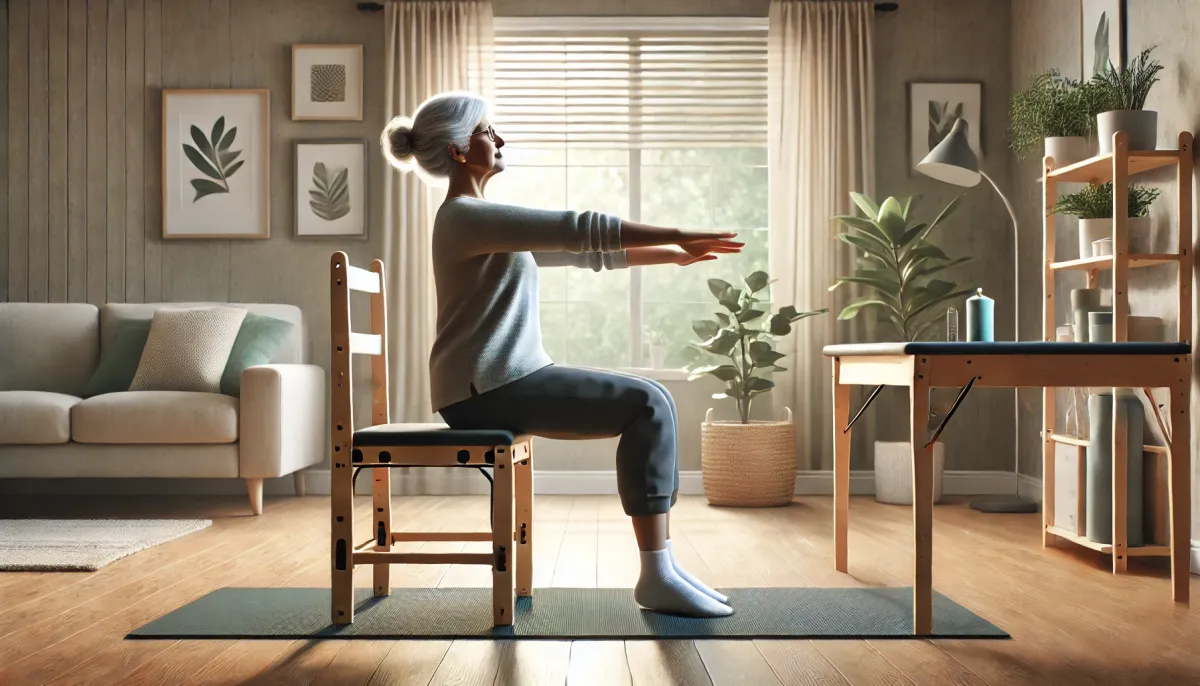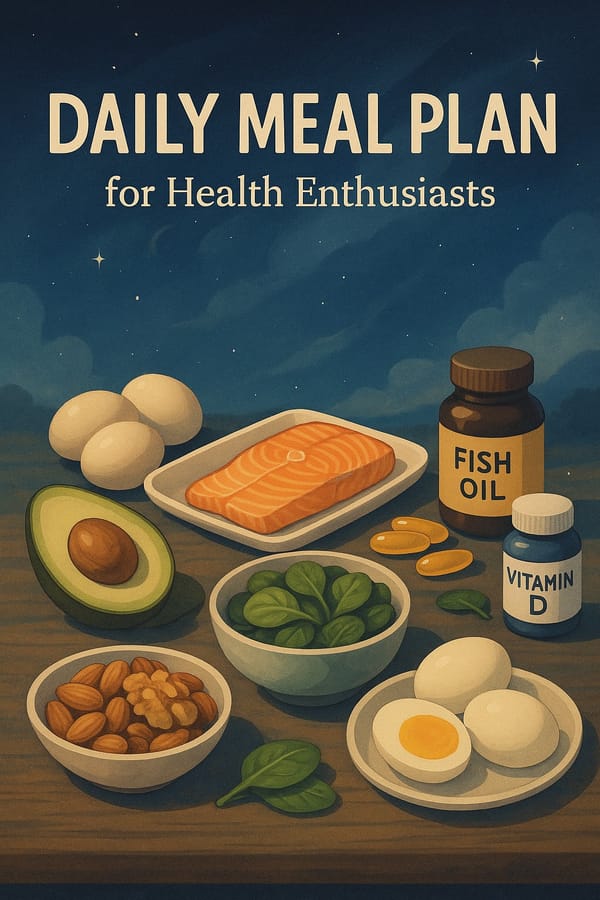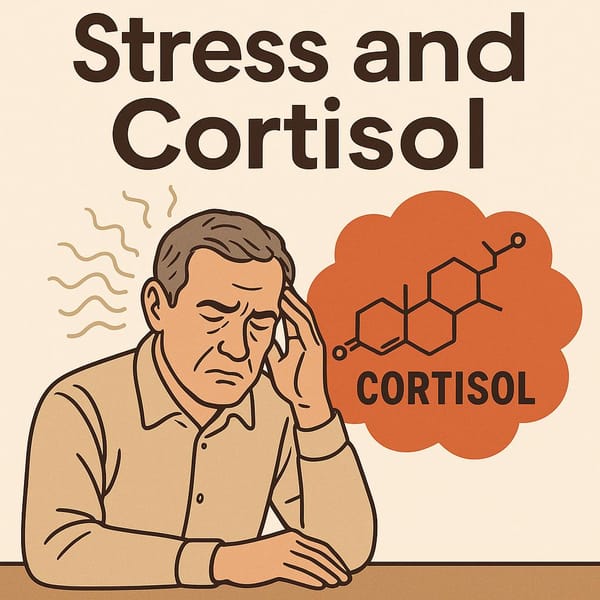8 Hidden Tips for Senior Weight Loss and Strength Building
Discover 8 hidden tips for seniors to lose weight and gain strength, based on scientific research. Read on for easy-to-follow strategies that promote lasting health.

Introduction
Entering your 50s and beyond often makes weight loss and maintaining physical strength more challenging. Changes in metabolism, hormone fluctuations, and health conditions can all impact your daily routine. If you search online or check health magazines, you’ll find the same old tips repeated over and over again. In this article, we’ll reveal 8 lesser-known techniques that can help seniors effectively lose weight while building strength.
These tips are backed by reliable sources such as the World Health Organization (WHO), the U.S. National Institutes of Health (NIH), and various peer-reviewed medical journals. We’ve also simplified the explanations and included practical advice you can immediately apply to your daily life. Get ready to explore some uniquely targeted health ideas for seniors!
1) Focus on High-Quality Protein (And Why Many Overlook It)
Older adults need more protein than younger individuals, mainly to repair and maintain muscle mass, which tends to decrease with age. Multiple nutritional research institutes indicate that adequate protein intake stimulates muscle synthesis, reduces tissue breakdown, and importantly, helps with weight control.
Why Is Protein Crucial for Seniors?
- Boosts Metabolism: Protein can increase your resting metabolic rate, helping you burn more calories throughout the day.
- Builds Muscle: Muscle tissue is metabolically active, so having more lean muscle mass helps you burn more calories at rest.
- Enhances Satiety: Protein-rich foods can keep you feeling full, reducing cravings for unhealthy snacks.
Choosing High-Quality Protein
- Lean Meats: Opt for chicken breast, fish, or lean beef; avoid frying in heavy oil.
- Legumes and Beans: Soybeans, lentils, and quinoa are excellent plant-based protein sources.
- Low-Fat Dairy: Include yogurt, low-fat cheese, or skim milk for protein and calcium.
- Protein Supplements: If you’re not getting enough protein, consider a supplement (after consulting a doctor or nutritionist).
Pro Tip: Spread your protein intake throughout the day. For instance, have 3-5 small meals that include some form of protein in each.
2) Move More with NEAT (Non-Exercise Activity Thermogenesis)
Though the term NEAT might not be familiar, it refers to the calories burned through non-exercise activities such as walking around the house, standing up frequently, gardening, doing house chores, or even tapping your feet while sitting.
Why Is NEAT Important for Weight Loss?
- These small movements add up significantly over time.
- If you’re not doing intense workouts, NEAT can be an excellent way to stay active.
Examples of NEAT Activities
- Light Walk After Meals: A 10-15-minute post-meal walk can help your metabolism.
- Frequent Mobility Breaks: Stand up every 30 minutes to stretch or walk around.
- Gardening: Planting flowers or trimming hedges can burn more calories than you think.
- Daily Movement Habits: Take the stairs for short distances or set an hourly alarm to remind you to get up for water.
Caution: For those with joint or knee issues, consult a doctor for NEAT activities that are safe and comfortable.
3) Nighttime Stretching — A Key to Better Sleep (and Weight Loss)
Quality sleep is critical for effective weight loss, especially in seniors. According to the National Sleep Foundation, poor sleep can lead to higher risks of obesity. Research also shows that insufficient sleep increases ghrelin (the hunger hormone) while decreasing leptin (the hormone responsible for feeling full).
How Does Stretching Before Bed Aid Weight Loss?
- It relaxes your muscles, helping you fall asleep faster.
- It alleviates minor joint or back pain, ensuring a more restful night.
Simple Nighttime Stretching Exercises
- Hamstring Stretch: Lie on your back, lift one leg, and gently pull it toward you.
- Hip Flexor Stretch: Gently stretch the front of your hip.
- Knee-to-Chest: Lie on your back, bring one knee to your chest, then switch legs.
Pro Tip: Move slowly and breathe deeply while stretching. Stop if you experience pain.
4) Relaxing Warm Baths or Salt Soaks
Many seniors face joint or muscle discomfort, especially when starting a new exercise routine. A warm bath or a bath with Epsom salt can reduce inflammation and provide mild calorie burn.
Benefits of a Warm Bath or Salt Soak
- Muscle Relaxation: Warm water improves blood circulation and loosens tight muscles.
- Stress Reduction: Calming warm baths help lower cortisol, a hormone that promotes fat storage when elevated.
Tips for a Safe Soak
- Temperature: Aim for 37–40°C (98.6–104°F).
- Use Epsom Salt: Rich in magnesium sulfate, which can relieve muscle tension.
- Time Limit: Soak for no more than 20 minutes, especially if you have heart or blood pressure concerns.
5) Chair Pilates: A Safer Way to Exercise
Chair Pilates is gaining popularity among seniors in Europe and the U.S. It’s a low-impact exercise focusing on core strength, flexibility, and balance — all while seated!
Benefits of Chair Pilates
- Core Strength: Strengthens the abdominal and lower back muscles.
- Low Impact: Reduced stress on knees and ankles.
- Improves Breathing: Emphasizes controlled breathing and posture.
Basic Exercises
- Seated Leg Lifts: Strengthens the hips and lower abdomen.
- Chair Twist: Improves mid-back and waist flexibility.
- Seated Arm Circles: Loosens stiff shoulders.
Pro Tip: Start with 8-10 reps per exercise. Stop if you feel dizzy or any unusual pain.
6) “Active Rest” Between Sets
If you’re lifting light weights or doing resistance training, try Active Rest—moving gently during your rest intervals instead of sitting still.
Why Active Rest?
- Continuous Calorie Burn: Walking in place or stretching keeps your metabolism active.
- Reduced Injury Risk: Gentle movements prevent muscles from tightening or cooling down too quickly.
- Better Blood Flow: Helps oxygen reach your muscles.
Examples of Active Rest
- March in Place for 30-60 seconds after each set.
- Arm Swings 30-45 dregree to loosen shoulders.
- Light Bodyweight Squats (using a chair for support).
7) Plan Your “Cheat Meals” Wisely
Strict dieting can be mentally draining, especially for seniors who want to enjoy their favorite foods occasionally. Cheat meals can help maintain motivation if done right.
Why Cheat Meals?
- Reduces Psychological Stress: Occasional indulgences can make long-term dietary changes more sustainable.
- May Boost Metabolism: Some research suggests a spike in calorie intake can temporarily elevate your metabolism.
Cheat Meal Guidelines
- Limit Frequency: 1-2 cheat meals per week, not entire cheat days.
- Portion Control: If you want cake, have a small slice. Fries? Just a modest serving.
- Hydrate with Water: Avoid sugary drinks.
- Timing: Have your cheat meal earlier in the day so your body can burn more calories afterward.
8) Morning Lemon Water: Small Habit, Big Potential
Although research on “detox” effects is mixed, starting your day with room-temperature water and a squeeze of lemon can offer subtle but meaningful benefits.
Potential Advantages
- Aids Digestion: Lemon’s acidity can help maintain a favorable digestive environment.
- Refreshing: Wakes you up and keeps you hydrated.
- Reduced Sugar Intake: Substitute sugary morning beverages with lemon water.
How to Prepare
- Use Lukewarm or Room-Temperature Water
- Squeeze 1/2 to 1 Lemon: Avoid adding sugar.
- Sip Slowly: Let your body adjust.
- Protect Your Teeth: Follow with plain water or rinse to reduce acid on tooth enamel.
Conclusion
Seniors aiming for weight loss and increased strength don’t necessarily need complex workout plans. These “8 hidden tips” can make a significant difference. From focusing on high-quality protein and utilizing NEAT to incorporating nighttime stretches and active rest, these methods help keep your weight loss journey effective and enjoyable.
Always tailor these techniques to your own health conditions. Consult your doctor or a registered dietitian if you have any concerns about starting a new exercise or diet plan.
When combined with discipline and regular attention to mental well-being, these tips can help seniors stay strong, maintain a healthy weight, and truly enjoy life beyond retirement. Remember, good health is the best gift you can give yourself, no matter your age!
(Disclaimer)
- This article provides general information only and is not a substitute for professional medical advice. If you have a chronic condition or experience any unusual symptoms, consult a healthcare provider.
- If you feel any pain or discomfort during any activity, stop immediately and seek medical attention.
Suggested Image: Use DALL-E to create an illustration of a senior doing chair pilates or a glass of lemon water alongside a sturdy chair, with captions highlighting the health benefits.



